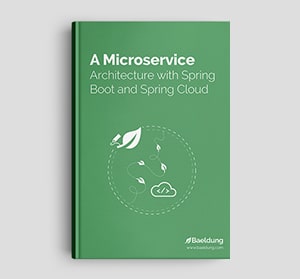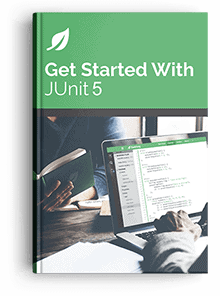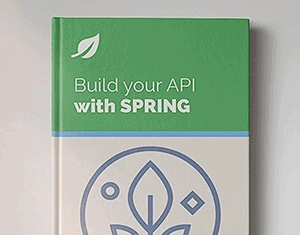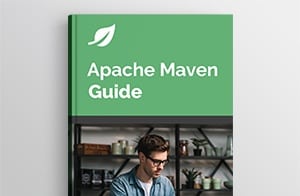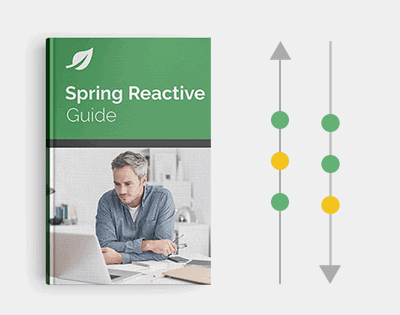1. Overview
Bytecode analysis is a common practice among Java developers for many reasons, like finding problems with code, code profiling, and searching classes with specific annotations.
In this article, we’ll explore ways to view the bytecode of a class file in Java.
2. What Is the Bytecode?
Bytecode is the intermediate representation of a Java program, allowing a JVM to translate a program into machine-level assembly instructions.
When a Java program is compiled, bytecode is generated in the form of a .class file. This .class file contains non-runnable instructions and relies on a JVM to be interpreted.
3. Using javap
The Java command-line comes with the javap tool that displays information about the fields, constructors, and methods of a class file.
Based on the options used, it can disassemble a class and show the instructions that comprise the Java bytecode.
3.1. javap
Let’s use the javap command to view the bytecode of the most-common Object class:
$ javap java.lang.Object
The output of the command will show the bare-minimum construct of the Object class:
public class java.lang.Object {
public java.lang.Object();
public final native java.lang.Class<?> getClass();
public native int hashCode();
public boolean equals(java.lang.Object);
protected native java.lang.Object clone() throws java.lang.CloneNotSupportedException;
public java.lang.String toString();
public final native void notify();
public final native void notifyAll();
public final native void wait(long) throws java.lang.InterruptedException;
public final void wait(long, int) throws java.lang.InterruptedException;
public final void wait() throws java.lang.InterruptedException;
protected void finalize() throws java.lang.Throwable;
static {};
}
By default, the bytecode output will not contain fields/methods with a private access modifier.
3.2. javap -p
To view all classes and members, we can use the -p argument:
public class java.lang.Object {
public java.lang.Object();
private static native void registerNatives();
public final native java.lang.Class<?> getClass();
public native int hashCode();
public boolean equals(java.lang.Object);
protected native java.lang.Object clone() throws java.lang.CloneNotSupportedException;
// ...
}
Here, we can observe a private method registerNatives is also shown in the bytecode of the Object class.
3.3. javap -v
Similarly, we can use the -v argument to view verbose information like stack size and arguments for methods of the Object class:
Classfile jar:file:/Library/Java/JavaVirtualMachines/jdk1.8.0_131.jdk/Contents/Home/jre/lib/rt.jar!/java/lang/Object.class
Last modified Mar 15, 2017; size 1497 bytes
MD5 checksum 5916745820b5eb3e5647da3b6cc6ef65
Compiled from "Object.java"
public class java.lang.Object
minor version: 0
major version: 52
flags: ACC_PUBLIC, ACC_SUPER
Constant pool:
#1 = Class #49 // java/lang/StringBuilder
// ...
{
public java.lang.Object();
descriptor: ()V
flags: ACC_PUBLIC
Code:
stack=0, locals=1, args_size=1
0: return
LineNumberTable:
line 37: 0
public final native java.lang.Class<?> getClass();
descriptor: ()Ljava/lang/Class;
flags: ACC_PUBLIC, ACC_FINAL, ACC_NATIVE
Signature: #26 // ()Ljava/lang/Class<*>;
// ...
}
SourceFile: "Object.java"
3.4. javap -c
Also, the javap command allows disassembling the whole Java class by using the -c argument:
Compiled from "Object.java"
public class java.lang.Object {
public java.lang.Object();
Code:
0: return
public boolean equals(java.lang.Object);
Code:
0: aload_0
1: aload_1
2: if_acmpne 9
5: iconst_1
6: goto 10
9: iconst_0
10: ireturn
protected native java.lang.Object clone() throws java.lang.CloneNotSupportedException;
// ...
}
Further, the javap command allows us to check the system info, constants, and internal type signatures using various arguments.
We can list all arguments supported by the javap command by using the -help argument.
Now that we’ve seen a Java command-line solution for viewing the bytecode of a class file, let’s examine a few bytecode-manipulation libraries.
4. Using ASM
ASM is a popular performance-oriented, low-level Java bytecode manipulation and analysis framework.
4.1. Setup
First, let’s add the latest asm and asm-util Maven dependencies to our pom.xml:
<dependency>
<groupId>org.ow2.asm</groupId>
<artifactId>asm</artifactId>
<version>9.4</version>
</dependency>
<dependency>
<groupId>org.ow2.asm</groupId>
<artifactId>asm-util</artifactId>
<version>9.4</version>
</dependency>
4.2. View Bytecode
Then, we’ll use the ClassReader and TraceClassVisitor to view the bytecode of the Object class:
try {
ClassReader reader = new ClassReader("java.lang.Object");
StringWriter sw = new StringWriter();
TraceClassVisitor tcv = new TraceClassVisitor(new PrintWriter(System.out));
reader.accept(tcv, 0);
} catch (IOException e) {
e.printStackTrace();
}
Here, we’ll note that the TraceClassVisitor object requires the PrintWriter object to extract and produce the bytecode:
// class version 52.0 (52)
// access flags 0x21
public class java/lang/Object {
// compiled from: Object.java
// access flags 0x1
public <init>()V
L0
LINENUMBER 37 L0
RETURN
MAXSTACK = 0
MAXLOCALS = 1
// access flags 0x101
public native hashCode()I
// access flags 0x1
public equals(Ljava/lang/Object;)Z
L0
LINENUMBER 149 L0
ALOAD 0
ALOAD 1
IF_ACMPNE L1
ICONST_1
GOTO L2
L1
// ...
}
5. Using BCEL
The Byte Code Engineering Library, popularly known as Apache Commons BCEL, provides a convenient way to create/manipulate Java class files.
5.1. Maven Dependency
As usual, let’s add the latest bcel Maven dependency to our pom.xml:
<dependency>
<groupId>org.apache.bcel</groupId>
<artifactId>bcel</artifactId>
<version>6.5.0</version>
</dependency>
5.2. Disassemble Class and View Bytecode
Then, we can use the Repository class to generate the JavaClass object:
try {
JavaClass objectClazz = Repository.lookupClass("java.lang.Object");
System.out.println(objectClazz.toString());
} catch (ClassNotFoundException e) {
e.printStackTrace();
}
Here, we’ve used the toString method on the objectClazz object to see bytecode in a concise format:
public class java.lang.Object
file name java.lang.Object
compiled from Object.java
compiler version 52.0
access flags 33
constant pool 78 entries
ACC_SUPER flag true
Attribute(s):
SourceFile: Object.java
14 methods:
public void <init>()
private static native void registerNatives()
public final native Class getClass() [Signature: ()Ljava/lang/Class<*>;]
public native int hashCode()
public boolean equals(Object arg1)
protected native Object clone()
throws Exceptions: java.lang.CloneNotSupportedException
public String toString()
public final native void notify()
// ...
Further, the JavaClass class provides methods like getConstantPool, getFields, and getMethods to view the details of the disassembled class.
assertEquals(objectClazz.getFileName(), "java.lang.Object");
assertEquals(objectClazz.getMethods().length, 12);
assertTrue(objectClazz.toString().contains("public class java.lang.Object"));
Similarly, set* methods are available for bytecode manipulation.
6. Using Javassist
Also, we can use the Javassist (Java Programming Assistant) library that provides high-level APIs to view/manipulate Java bytecode.
6.1. Maven Dependency
First, we’ll add the latest javassist Maven dependency to our pom.xml:
<dependency>
<groupId>org.javassist</groupId>
<artifactId>javassist</artifactId>
<version>3.27.0-GA</version>
</dependency>
6.2. Generate ClassFile
Then, we can use the ClassPool and ClassFile classes to generate a Java class:
try {
ClassPool cp = ClassPool.getDefault();
ClassFile cf = cp.get("java.lang.Object").getClassFile();
cf.write(new DataOutputStream(new FileOutputStream("Object.class")));
} catch (NotFoundException e) {
e.printStackTrace();
}
Here, we’ve used the write method, which allows us to write the class file using the DataOutputStream object:
// Compiled from Object.java (version 1.8 : 52.0, super bit)
public class java.lang.Object {
// Method descriptor #19 ()V
// Stack: 0, Locals: 1
public Object();
0 return
Line numbers:
[pc: 0, line: 37]
// Method descriptor #19 ()V
private static native void registerNatives();
// Method descriptor #24 ()Ljava/lang/Class;
// Signature: ()Ljava/lang/Class<*>;
public final native java.lang.Class getClass();
// Method descriptor #28 ()I
public native int hashCode();
// ...
Also, the object of the ClassFile class provides access to the constant pool, fields, and methods:
assertEquals(cf.getName(), "java.lang.Object");
assertEquals(cf.getMethods().size(), 12);
7. Jclasslib
Additionally, we can use an IDE based plugin to view the bytecode of a class file. For instance, let’s explore the jclasslib Bytecode viewer plugin available for IntelliJ IDEA.
7.1. Installation
First, we’ll install the plugin using the Settings/Preferences dialog:
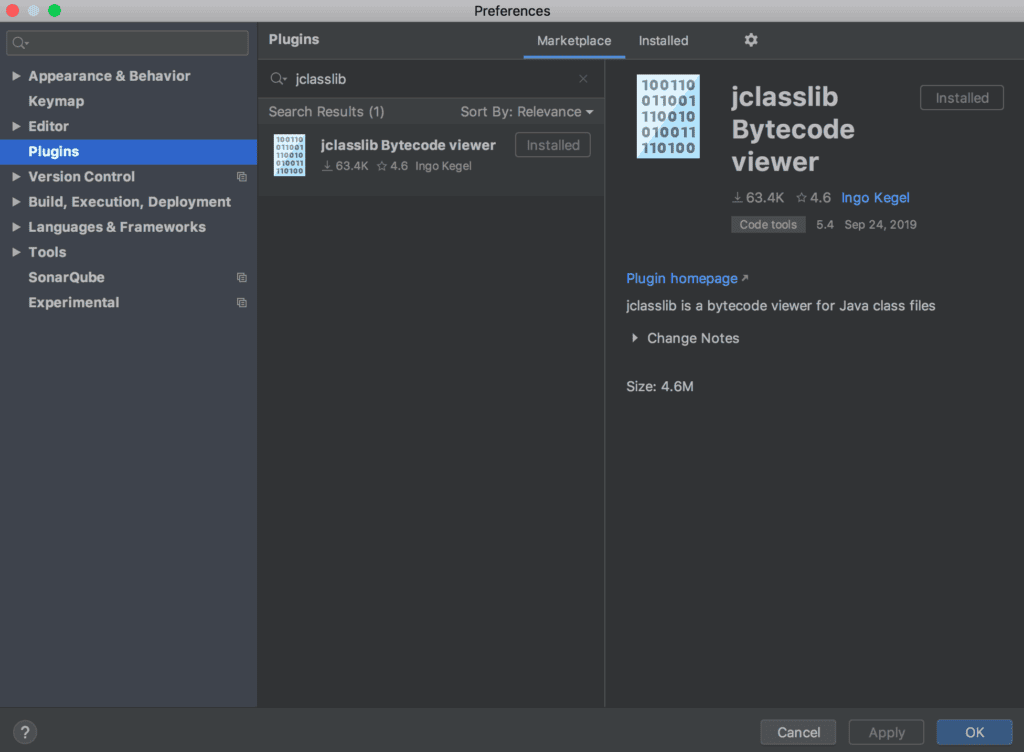
7.2. View Bytecode of the Object Class
Then, we can choose “Show Bytecode With Jclasslib” option under the View menu to view bytecode of the selected Object class:
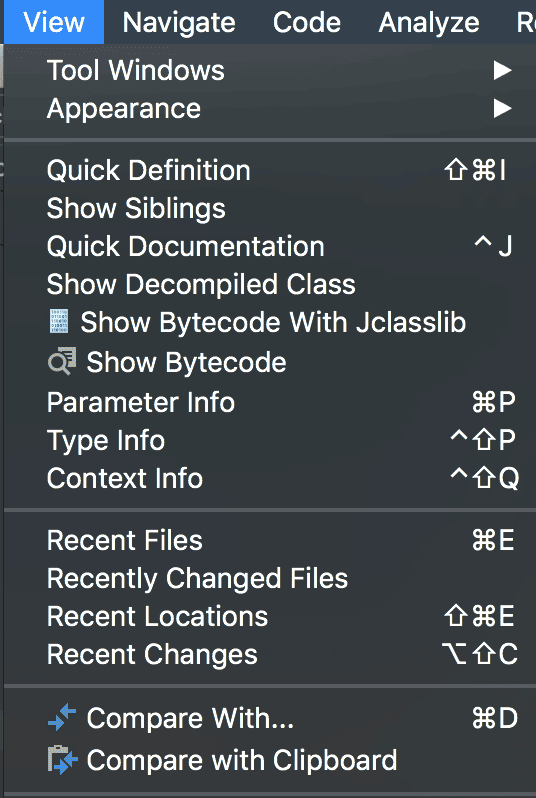
Next, a dialog will open to show the bytecode of the Object class:
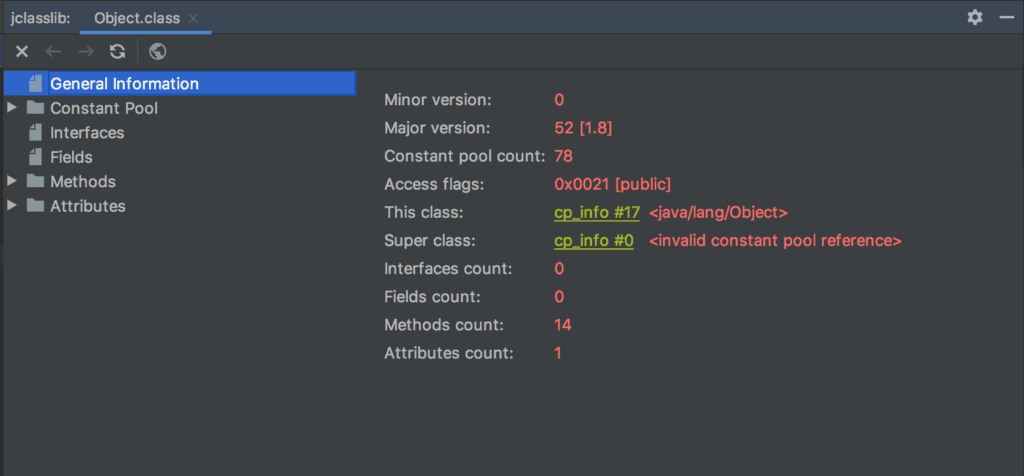
7.3. View Details
Also, we can see various details of the bytecode like constant pool, fields, and methods using the Jclasslib plugin dialog:
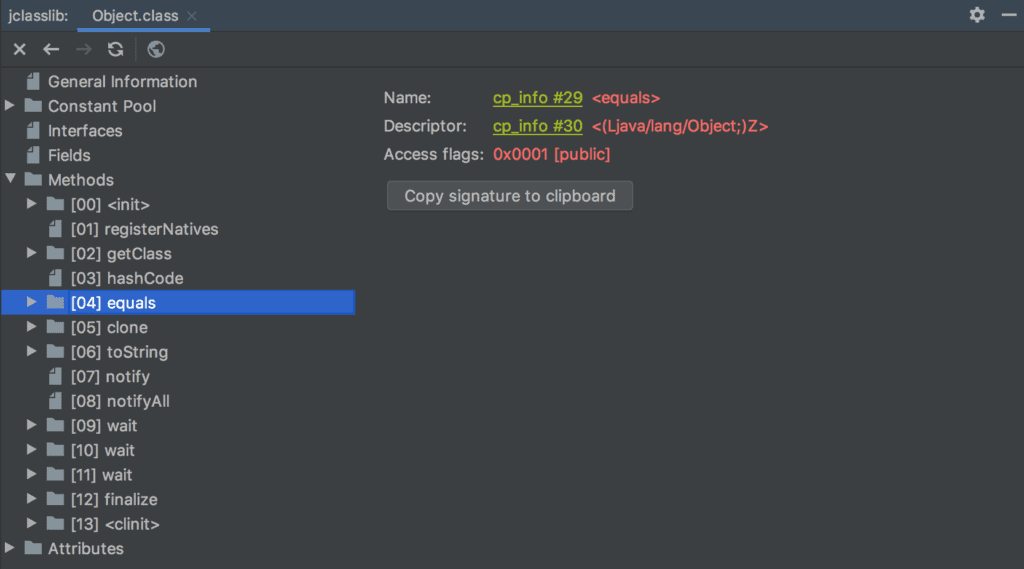
Similarly, we have the Bytecode Visualizer Plugin to view the bytecode of a class file using the Eclipse IDE.
8. Conclusion
In this tutorial, we explored ways to view the bytecode of a class file in Java.
First, we examined the javap command along with its various arguments. Then, we went through a few bytecode manipulation libraries that provide the features to view and manipulate the bytecode.
Last, we looked into an IDE based plugin Jclasslib that allows us to view bytecode in IntelliJ IDEA.
The code backing this article is available on GitHub. Once you're
logged in as a Baeldung Pro Member, start learning and coding on the project.











